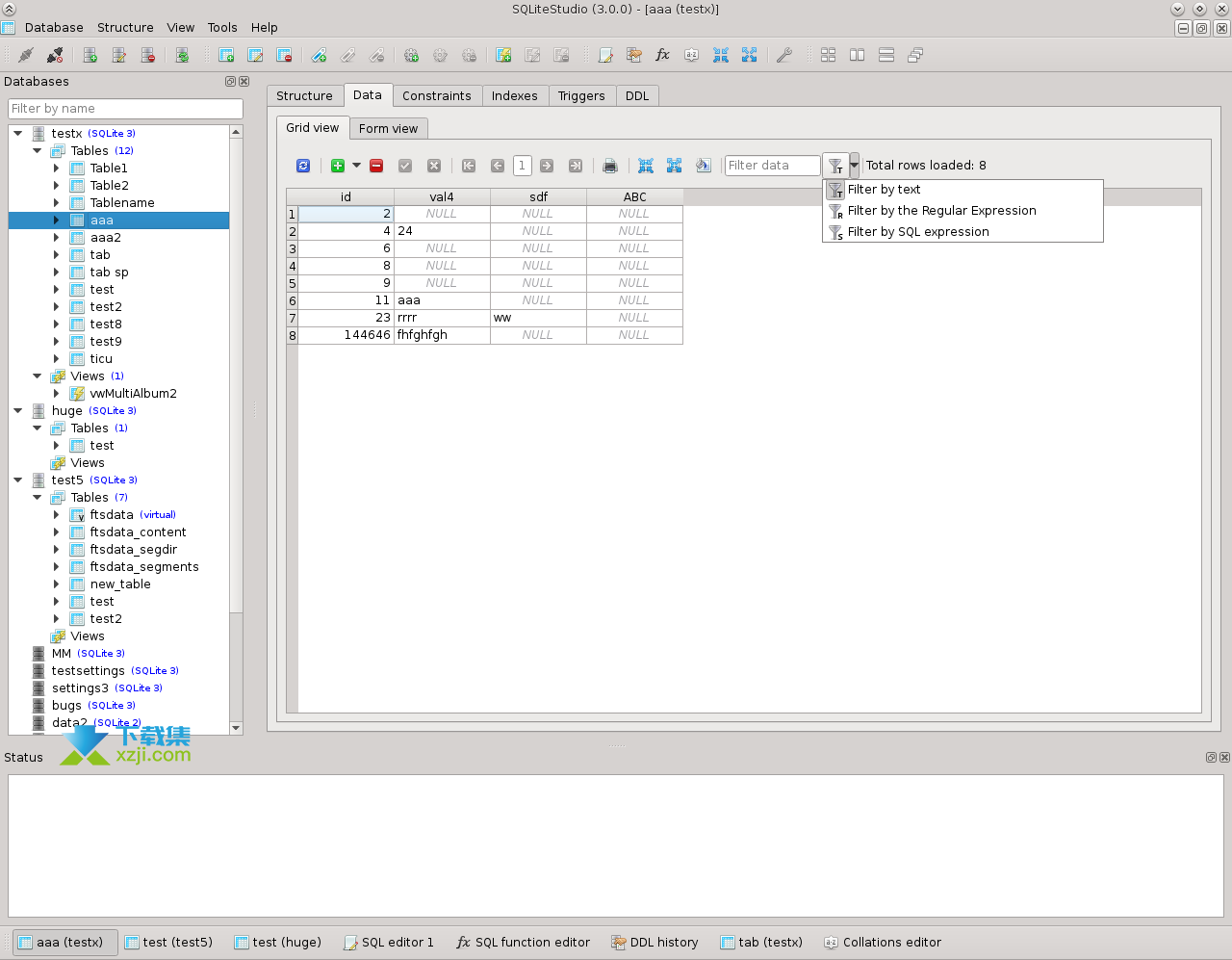

- #Sqlitestudio create table from csv how to#
- #Sqlitestudio create table from csv update#
- #Sqlitestudio create table from csv code#
In this tutorial, you have learned about database views and how to use the CREATE VIEW statement to create new views in SQLite.
#Sqlitestudio create table from csv code#
This query returns data from the v_albums view: SELECT * FROM v_albums Code language: SQL (Structured Query Language) ( sql ) In this example, we specified new columns for the view AlbumTitle for the albums.title column and Minutes for the expression SUM(milliseconds) / 60000 The following statement creates a view named v_albums that contains album title and the length of album in minutes: CREATE VIEW v_albums (Ĭode language: SQL (Structured Query Language) ( sql ) Try It 2) Creating a view with custom column names SELECT * FROM v_tracks Code language: SQL (Structured Query Language) ( sql ) Second, choose the database and table that you want to import data then click the Next button. First, from the menu choose tool menu item. To create a view based on this query, you use the following statement: CREATE VIEW v_tracksįrom now on, you can use the following simple query instead of the complex one above. We will use the SQLite Studio to show you how to import a CSV file into a table with the assumption that the target table already exists in the database. INNER JOIN genres ON genres.GenreId = tracks.GenreId Code language: SQL (Structured Query Language) ( sql ) INNER JOIN media_types ON media_types.MediaTypeId = tracks.MediaTypeId INNER JOIN albums ON Albums.AlbumId = tracks.AlbumId The following query gets data from the tracks, albums, media_types and genres tables in the sample database using the inner join clause.

1) Creating a view to simplify a complex query Let’s take some examples of creating a new view using the CREATE VIEW statement. However, you can assign the names of the view columns that are different from the column name of the table By default, the columns of the view derive from the result set of the SELECT statement. Third, specify a SELECT statement for the view. The view is called a temporary view and SQLite automatically removes the temporary view whenever the database connection is closed. Second, use the the TEMP or TEMPORARY option if you want the view to be only visible in the current database connection. If the view already exists, it does nothing. The IF NOT EXISTS option only creates a new view if it doesn’t exist. To create a view, you use the CREATE VIEW statement as follows: CREATE VIEW view_nameĪS select- statement Code language: SQL (Structured Query Language) ( sql )įirst, specify a name for the view.
#Sqlitestudio create table from csv update#
It means you cannot use INSERT, DELETE, and UPDATE statements to update data in the base tables through the view. Second, you can use views to encapsulate complex queries with joins to simplify the data access.You can add and remove the columns in the view without touching the schema of the underlying tables. First, views provide an abstraction layer over tables.The tables that the query in the view definition refers to are called base tables. You can access the data of the underlying tables through a view. A view is the way to pack a query into a named object stored in the database. In database theory, a view is a result set of a stored query. Summary: in this tutorial, you will learn how to use the SQLite CREATE VIEW statement to create a new view in the database.


 0 kommentar(er)
0 kommentar(er)
